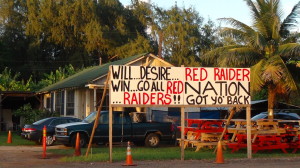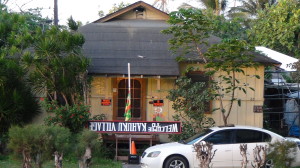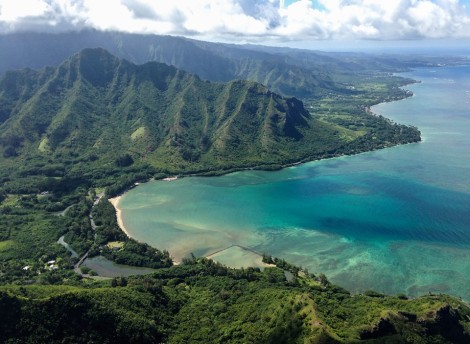http://www.huffingtonpost.com/choon-james/honolulu-mayors-disjointed-leadership_b_4113950.html Posted: 10/17/2013 12:15 pm
Oahu’s Kahuku Municipal Golf Course Could Disappear
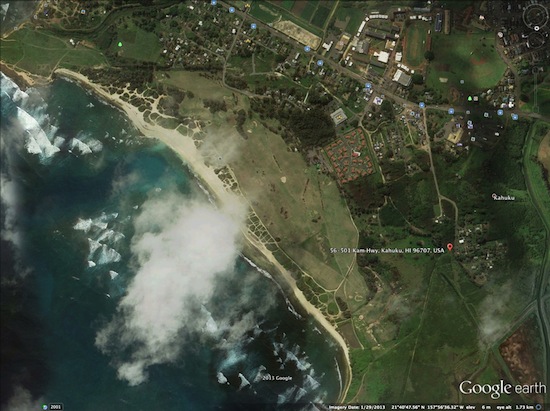
It’s Oahu’s best kept secret that the Kahuku Municipal Golf Course was never owned by the City and County of Honolulu.
The city leased the pristine grounds that included sandy beach frontage, sand dunes, and plantation-era graveyards as a ‘municipal’ golf course. Unknown to most, this ‘public’ course has been on a month-to-month lease for many years.
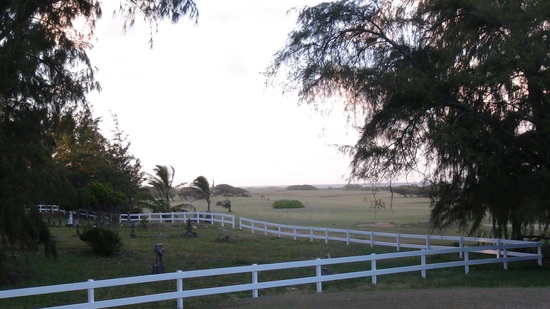

There is nothing ostentatious about this nine-hole walking golf course except the setting is peaceful and it provides inexpensive recreation for locals of all ages. Users enjoy it without much ado or fancy expectations from the City and County. As Oahu continues to grow, the need for such open space will become more acute, not less.
When the Campbell Estate dissolved its 107-year-old Trust and conducted a fire sale of its assets, this ‘municipal’ golf course was a part of a private bulk purchase by Continental Pacific, LLC in 2006. Continental Pacific, LLC (CP) focuses on acquiring large tracts of real estate and reselling them for profit.
Although a few local activists had raised concerns about losing the ‘public’ course at that time, neither Councilman Donovan Dela Cruz nor Mayor Mufi Hannemann seized the opportunity to ensure that this ‘public’ golf course remained in public hands.

Acquiring the historic Kahuku Golf Course and the Plantation Camp Village would have been the right direction to take.
The city has a history of land-banking property for future parks and saving historical plantation camps to avoid massive social disruptions and homelessness. Also, this iconic region is a golden goose for Oahu’s tourism industry. There are compelling reasons to preserve the open space and rural charm of this region.
The 2008 financial crisis created a severe downturn on the economy that dampened many real estate ventures. There was a lull in flipping real estate for profits.
Having missed the first wave sale from Campbell Estate in 2006, the city could have stepped up to acquire the Kahuku Golf Course when Continental Pacific, LLC predictably listed the Kahuku Golf Course for $10 Million in 2011.
Continental Pacific, LLC had no buyers then.
It listed again at $11,495,000 on Oct. 15, 2012 offering financing terms with “Cash, Open, Private Mortgage, or Seller Financing.”
It was unfortunate that city hall again failed to capitalize on this subsequent window of opportunity to put in Golf Course in public hands. It was not that the City Council Chair Ernie Martin didn’t try.
In April 2012, Honolulu City Council Chair Ernie Martin, Budget Chair Ann Kobayashi, and the Council unanimously adopted and funded Resolution 12-089 — urging the Mayor to initiate the acquisition of the land beneath Kahuku Golf Course.
Then-Mayor Peter Carlisle and current Mayor Kirk Caldwell both declined to cooperate with the City Council.
In September 2013, the public learned that CP was negotiating a purchase with a Chinese investor for the Kahuku Golf Course.
City Councilman Ernie Martin explained that the mayors considered the situation “a private matter that the county should not get involved in.”
The public submitted petitions to preserve the course to Mayor Kirk Caldwell with no success.
On Oct. 10, 2013, Mayor Caldwell’s representative to the Ko’olauloa Neighborhood Board — Justin Gruenstein, former campaign chair for ‘Hannemann for Congress’ — tried to explain Caldwell’s non-performance. Gruenstein attempted to soft-sell that it would be too expensive to own the course and bring the golf course up to city standards. The city had no money.
Thus, acquisition of the $11 million 122-acre beachfront golf course that has been in public domain since 1937 was off the table! Gruenstein stated the approved funds would revert to the City General Fund.
The public’s response to Gruenstein’s excuse was “baloney.” The city could land bank. The city owned many properties that were not maintained nor fixed up to city standards.
It’s outrageous to see Mayor Caldwell’s arbitrary responses towards issues with great consequences.
On one hand, Mayor Caldwell insists that the city has no funds to upgrade the Kahuku Golf Course upon acquisition and Continental Pacific is a ‘private property owner’ he should not involve the city with.
On the other hand, this same mayor is threatening, including eminent domain abuse, the owners of a small privately-owned lot of 20, 300 sq. ft. in Hau’ula, just ten minutes south of the precarious golf course to build his pet $13 million fire station relocation project.
Additionally, next to the golf course sits the Kahuku Plantation Camp, also acquired by CP, that is facing massive evictions. Generations of plantation workers and their posterity are facing controversial evictions.
The City Council adopted and funded Resolution 12-90 to prevent this massive social disruption and homelessness in this 71-home compound. But again, Mayor Kirk Caldwell refused to collaborate with the council by fiddling the same arbitrary tune of respecting Continental Pacific as private property owners.
Mayor Kirk Caldwell’s constituents tend to conclude that his non-performance could be due to the fact that the attorney — Lex Smith who is representing Continental Pacific, LLC – was also his mayoral campaign committee chairman in 2012. The mayor denied any influence.
It’s tough to figure out Mayor Kirk Caldwell’s logic and his fiscal priorities. Honolulu deserves fact-and-merit-based collaboration with its citizenry in order to ensure that everybody wins.
It would be a travesty for Oahu if politics will render the Kahuku Municipal Golf Course into oblivion.
The mayor can be contacted at 808 768-4141 or mayor@honolulu.gov.

